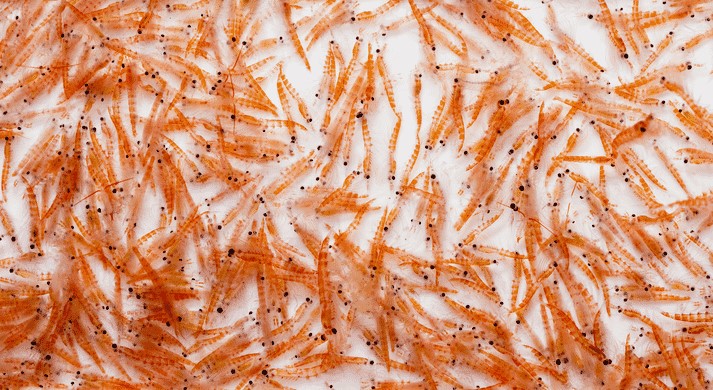Feeds containing krill meal improve the health and performance of salmonids, according to newly published research paper.

Antarctic krill (Euphausia superba) is one of the most abundant species on Earth, with an estimated biomass of 500 million tonnes. Krill is an important part of the marine food chain in the Antarctic Ocean, and the krill fishery is strictly regulated by the Commission for the Conservation of Antarctic Resources (CCAMLR).
The review paper, written by scientists from Aker BioMarine, suggests that Antarctic krill products have a positive impact on the feed intake, growth performance, fillet quality and organ health in salmonids, based on more than a decade of well-documented scientific studies and experimentation.
The long-term sustainability of the aquaculture industry demands a viable range of alternative ingredients, to reduce the burden on fishmeal and fish oil for feeds.
According to Aker Biomarine, Antarctic krill products have emerged as strong contenders due to their sustainable sourcing and significant health benefits. In the new review article, the authors aggregate key findings from multiple studies on salmonids, to present a holistic overview of the specific benefits of krill meal on the fish growth, fillet quality and organ health.
“This review paper is unique as it’s a culmination of multiple studies all showing that krill meal has proven to be a sustainable source of protein, phospholipids, omega-3 fatty acids (such as EPA and DHA), feed attractants and astaxanthin, making it a key marine ingredient for fish diets. Sustainability of ingredient sources is an increasingly important factor for the aquaculture industry, which is why use of Antarctic krill is helping salmonid farmers to reduce their reliance on costly and limited-in-supply fish products,” says Dr Kiranpreet Kaur, from Aker BioMarine.
The benefits flagged up by Dr Kaur include:
- Krill meal inclusion in salmonid feed is suggested to be beneficial for enhancing feed intake and growth performance for fish, due to its feed attractant properties, with just 8-10 percent krill meal for 10-12 weeks considered sufficient to achieve growth performance benefits.
- The astaxanthin present in krill meal transfers to salmonid filets, improving pigmentation and overall fillet quality, based on inclusion levels of 10-15 percent. Besides, krill meal inclusion (10-15 percent) enhances the fillet quality by increasing firmness and by reducing gaping.
- Inclusion of 10-15 percent krill meal in the salmonid diet is beneficial for liver and intestinal health, due to the phospholipids, and phospholipid bound EPA and DHA in krill that help to reduce fat accumulation and inflammation in the liver and intestinal tissues.
By The Fish Site
Reference: https://thefishsite.com/articles/paper-backs-benefits-of-krill-in-aquafeeds
“Domesticated Shrimp Postlarvae – The Key To Success”
See more:
- Rabobank Sees Strong Outlook For Aquaculture Amid Covid Recovery
- Survival Of Pacific White Shrimp Juveniles After Exposure To Critical Oxygen Levels In Biofloc Culture
- Breeding Programme Boosts Insect Growth By 20 Percent

 Tiếng Việt
Tiếng Việt 中文 (中国)
中文 (中国)